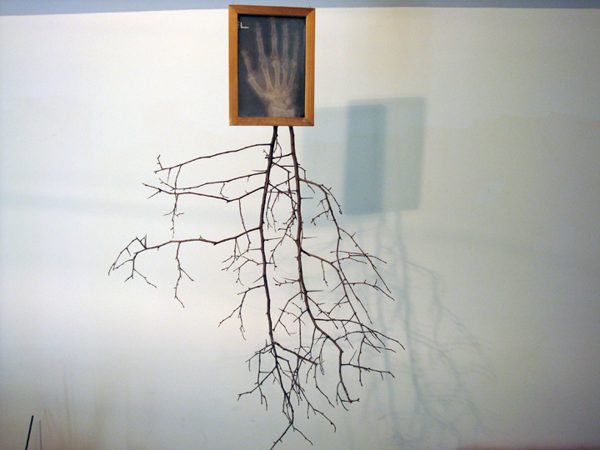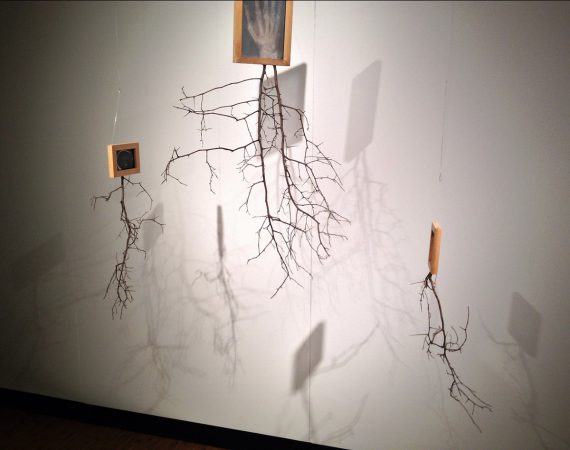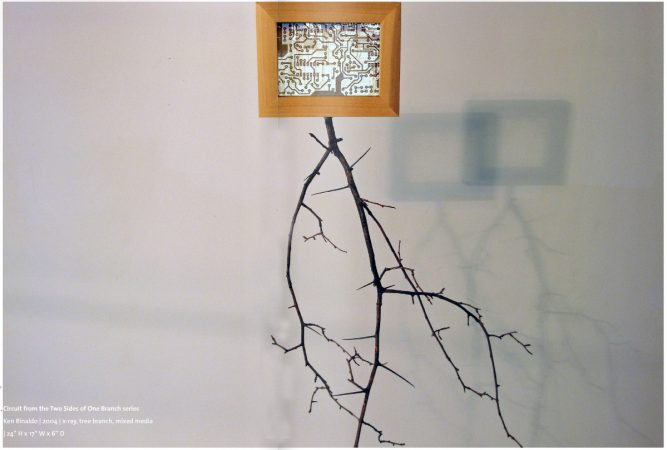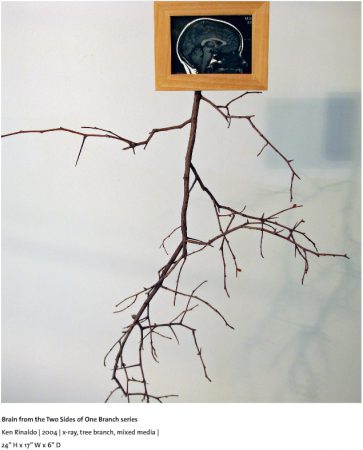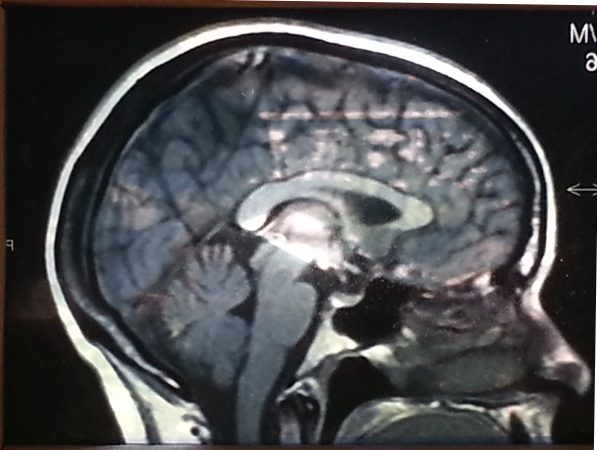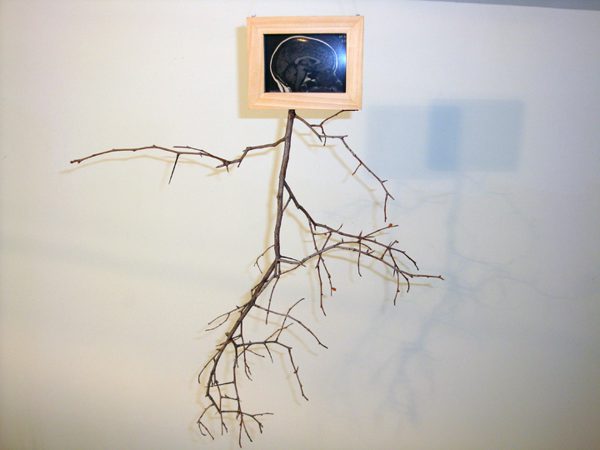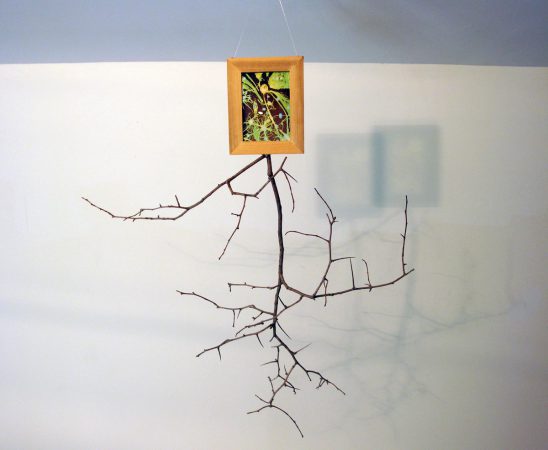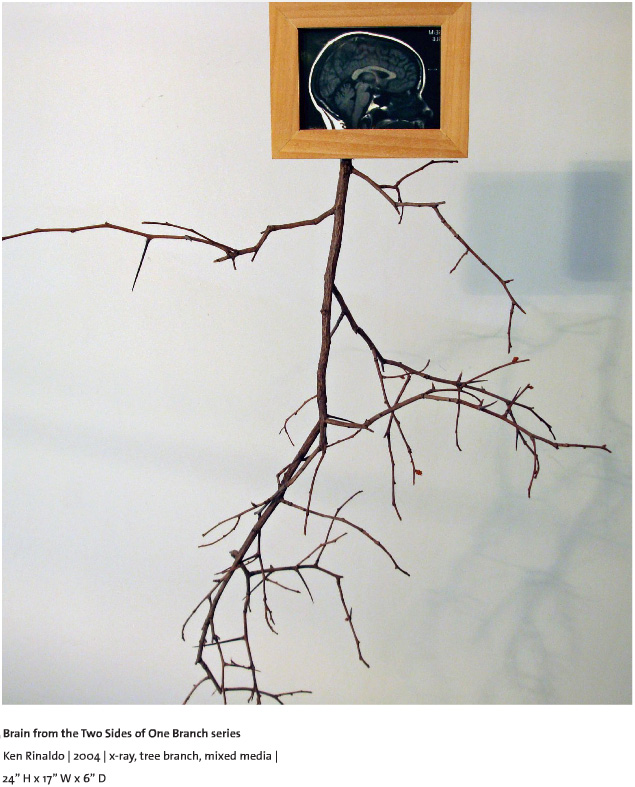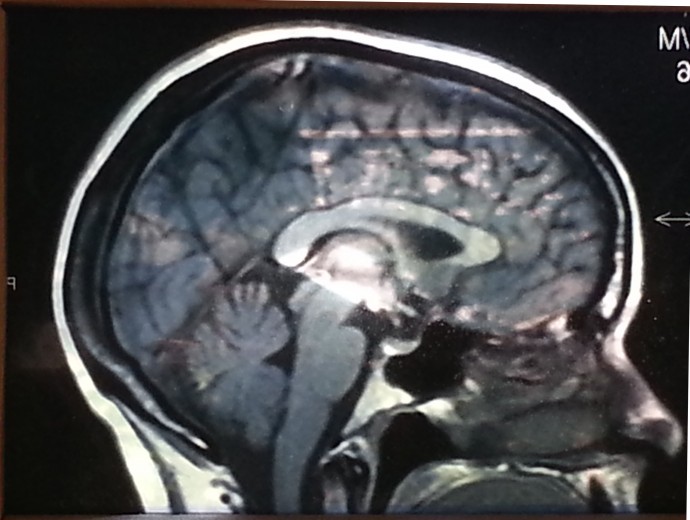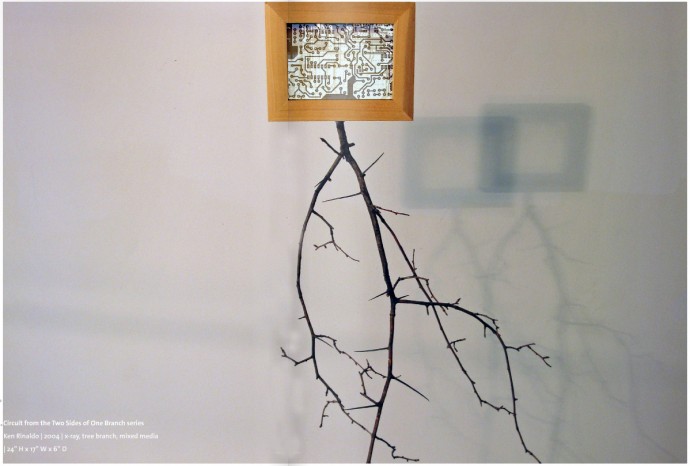Two sides of one branch are an x-ray of a human hand and a tree branch coming together in a conflation of the brilliance of tree structures.
An X-ray of a human skull and tree branches and VLSI circuits (Very Large Scale Integrated Circuit) plus a tree branch and the interior of a cell mixed with an image of a cytoskeleton.
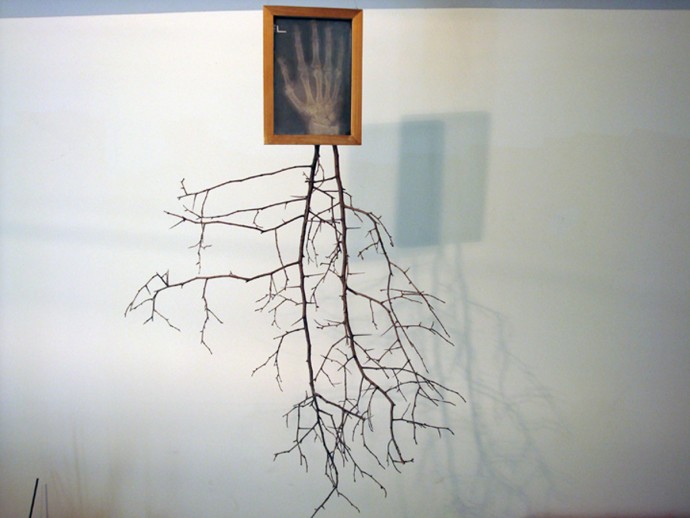
This work points to the all-pervasive tree structure as the most efficient matter, energy, and information distribution network.
Tree structures are forms that recur consistently in organic and inorganic systems alike. They may appear as fingers of rivers, cracks in rocks, branches of roots, snowflakes, cytoskeletons, brain cells, circuit boards, and very large-scale integrated circuits (VLSI), as well as internet and telephony networks.
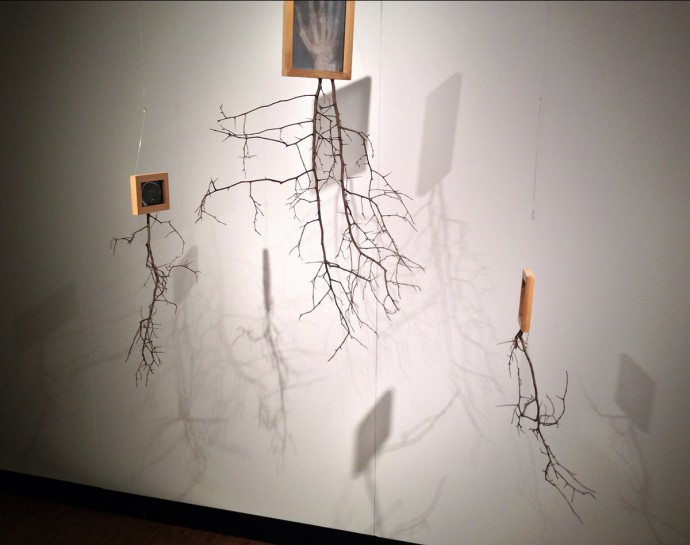
In biological systems, tree structures allow human fingers and neural sensory systems to manipulate our physical world, connecting to the tree structures in our vascular system that provide oxygen to cells and remove waste from cells.
Tree structures in our hands connect through our spine to the most complex tree structures we know, which is the human brain. One hundred billion brain cells branch off into dendrites to allow synaptic signaling.
Estimates are that human brains have 100 trillion synapses, allowing an incredibly complex interconnected network that perhaps best describes the notion of cognition.
It is fun to think of all human brains now connected via the tree structures of the web and imagine what this means to a new form of cognition known as a noetic network, a kind of emerging global mind. It is also fun to imagine the massive networks of mycelial cells (mushrooms) connected to forest systems as massive integrated living tree structures.
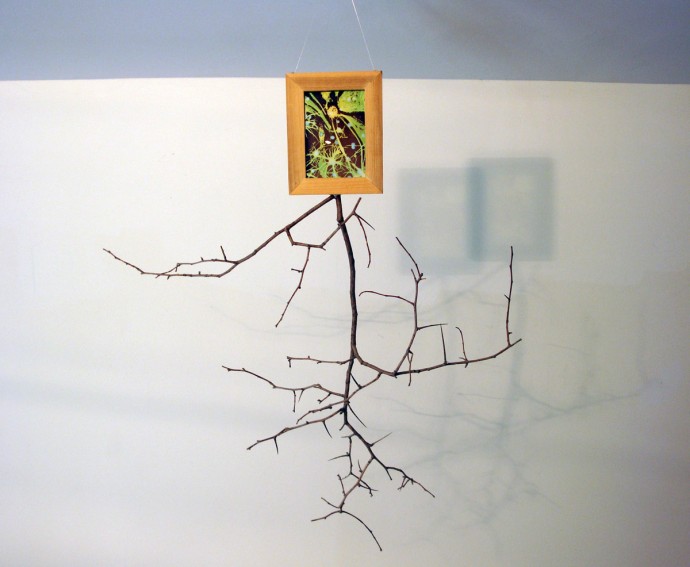
We now see technology recapping and understanding the all-pervasive tree structure as the most efficient matter, energy, and information distribution network. These are replicated and mimicked in VLSI chips and densely packed circuit boards interconnected through the web.
As robots are now being developed with transistor-based senses of touch and code-based electronic neural systems, the biological is symbiotically intertwining with the technological in unprecedented and exciting ways.
Exhibitions
THE ULRICH MUSEUM OF ART, Wichita, Kansas, 2013
Two Sides of One Branch for Nature’s Toolbox: Biodiversity, Art, and Invention, curated by Randy Rosenberg
THE LEONARDO MUSEUM Salt Lake City, Utah, 2013
Two sides of One Branch for Nature’s Toolbox: Biodiversity, Art, and Invention curated by Randy Rosenberg of Artworks for Change
THE FIELD MUSEUM Chicago, Illinois, 2012
Two sides of One Branch for Nature’s Toolbox: Biodiversity, Art, and Invention curated by Randy Rosenberg of Artworks for Change
EGG GALLERY Chicago, Illinois. Apr. 2001
Gallery Artists Exhibition. Displayed Three Sides of One Branch work on primordial intelligent form.
REFULALONGALLERY San Francisco, California, Apr. 2000
Displayed Two Sides of One Branch work on primordial form.
KALA ART INSTITUTE Berkeley, California, 2000
High Touch/High Techcurated by Archana Horsting, Philip Linhares, and Larry Rinder. Displayed Three Sides of One Branch works on tree structures and primordial intelligent form.
